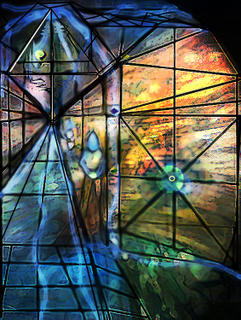Bird-like dinosaur forces rethink
From BBC News
A rooster-sized dinosaur with a long, slender snout and wing-like limbs is forcing a rethink on bird evolution. The 90 million-year-old reptile belongs to the same sickle-clawed group of dinosaurs as Velociraptor and feathered dinosaurs from China. Buitreraptor gonzalezorum , from the Neuquén Basin in central Argentina may provide tantalising evidence that powered flight evolved twice. Details of the discovery appear in the academic journal Nature.
One theory suggests the lineage of dinosaurs the new animal belonged to, the dromaeosaurs, originated in the Cretaceous Period (144 to 65 million years ago). But this discovery suggests their lineage can be traced further back in time, to the Jurassic (206 to 144 million years ago), experts say.
Continental movement
It would mean dromaeosaurs were around when the present-day continents of Earth were organised into a single landmass. This giant landmass later split into northern and southern parts, called Laurasia and Gondwana respectively. "The preservation of Buitreraptor is superb. The rich fauna of this area, known as La Buitrera, includes other carnivorous dinosaurs," said co-discoverer Sebastián Apesteguía of the Museum of Natural Sciences in Buenos Aires, Argentina. These include Giganotosaurus, a 13-14m-long behemoth that is the largest known meat-eating dinosaur. Until recently, the dinosaur group had only been found in Cretaceous rocks of Asia and North America, continents that were part of Laurasia. The new discovery, named Buitreraptor , provides definitive evidence that dromaeosaurs also lived in South America - part of Gondwana. They must have originated when all of the continents were still assembled in a single landmass - during the Jurassic. When the landmass split in two, the dromaeosaurs diverged into northern and southern groups.
Family rift
Analysis by the authors of the Nature paper show Buitreraptor and Rahonavis , a fossil animal from Madagascar previously considered a primitive bird, form a southern branch of the dromaeosaur family tree. This branch is distinct from Laurasian dromaeosaurids, including Velociraptor and some of the famous feathered dinosaurs from China. Birds are commonly thought to have evolved from this group. The authors say the discovery Rahonavis and Buitreraptor have long and wing-like forelimbs could imply that flight evolved twice, once in birds and once among this group of Gondwanan dromaeosaurs. The specimen will be on show at the Chicago Field Museum's Evolving Planet exhibition that opens in March.
Story from BBC NEWS:http://news.bbc.co.uk/go/pr/fr/-/2/hi/asia-pacific/4337888.stmPublished: 2005/10/13 13:44:36 GMT© BBC MMV




